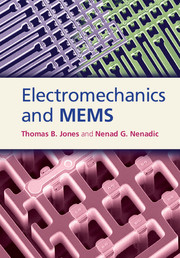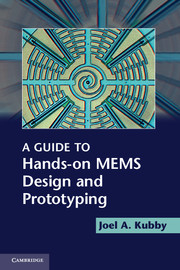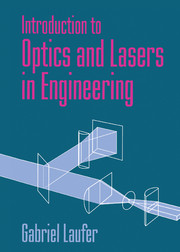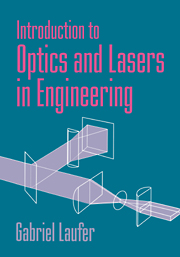Electromechanics and MEMS
Offering a consistent, systematic approach to capacitive, piezoelectric and magnetic MEMS, from basic electromechanical transducers to high-level models for sensors and actuators, this comprehensive textbook equips graduate and senior-level undergraduate students with all the resources necessary to design and develop practical, system-level MEMS models. The concise yet thorough treatment of the underlying principles of electromechanical transduction provides a solid theoretical framework for this development, with each new topic related back to the core concepts. Repeated references to the shared commonalities of all MEMS encourage students to develop a systems-based design perspective. Extensive use is made of easy-to-interpret electrical and mechanical analogs, such as electrical circuits, electromechanical two-port models and the cascade paradigm. Each chapter features worked examples and numerous problems, all designed to test and extend students' understanding of the key principles.
- Includes a thorough treatment of the fundamentals of electromechanical transduction, equipping students with essential tools to tackle new geometries and configurations
- Self-contained text builds on basic concepts from electric and mechanical engineering, covering capacitive, piezoelectric and magnetic MEMS
- Extensive illustrative examples and homework problems designed to extend and reinforce students' understanding of the material
Reviews & endorsements
'This is an excellent textbook presenting the fundamentals of electromechanics required by every practising MEMS engineer. The authors treat the arduous concepts of coupled electrical and mechanical systems simultaneously with lucidity and a thorough pedagogical rigor that comes from deep appreciation of the field and the love to impart that knowledge as a teacher. The book elucidates the concepts with very topical examples of microelectromechanical systems such as MEMS microphones, comb drive actuators, gyroscopes, energy harvesters, and piezoelectric and magnetic devices including Matlab® models and [a] comprehensive set of problems at the end of each chapter.' Srinivas Tadigadapa, Pennsylvania State University
'A fantastic book for the student seeking a solid foundation in electromechanical device design and an essential reference for the expert MEMS engineer. Jones and Nenadic present the fundamental theory behind electromechanical transduction, with a focus on capacitive drive and sense microsystems. The authors systematically frame the device fundamentals into real world micro scale device applications that provide relevance to the underlying physics. This book captures and dutifully explains the foundational physics at work in the MEMS devices we often unknowingly use daily in our automobiles, mobile phones and electronic devices.' Chris Keimel, GE Global Research
'Electromechanics and MEMS is a thorough treatment of fundamental MEMS analysis for both the student and the practitioner. The readers are presented with the tools to methodically build system models that are comprehensive yet manageable.' Eric Chojnacki, MEMSIC, Inc.
'Having designed and built MEMS for many years, I have come to appreciate a clear well-written book on the subject. The treatment by Jones and Nenadic is excellent. MEMS is a field of many specialties requiring knowledge of fabrication, electrostatics, mechanics, noise and circuits. The authors provide broad coverage of these topics, and thus allow students to understand how these systems fit together. The details on electrostatics and mechanics are rich and there are numerous examples which motivate these topics. The writing style is clear and approachable; light-hearted when possible and diligent when necessary. Ultimately, the text serves to sufficiently train the reader in the design trade-offs inherent in MEMS design. I am glad to see this new text and expect it to be a valuable resource for years to come.' Kevin A. Shaw, Sensor Platforms, Inc.
Product details
May 2013Hardback
9780521764834
577 pages
253 × 178 × 30 mm
1.3kg
345 b/w illus. 20 tables 120 exercises
Temporarily unavailable - available from TBC
Table of Contents
- 1. Introduction
- 2. Circuit-based modeling
- 3. Capacitive lumped parameter electromechanics
- 4. Small-signal capacitive electromechanical systems
- 5. Capacitive sensing and resonant drive circuits
- 6. Distributed 1-D and 2-D electromechanical structures
- 7. Practical MEMS devices
- 8. Electromechanics of piezoelectric elements
- 9. Electromechanics of magnetic MEMS devices
- A. Review of quasistatic electromagnetics
- B. Review of mechanical resonators
- C. Micromachining
- D. A brief review of solid mechanics.







